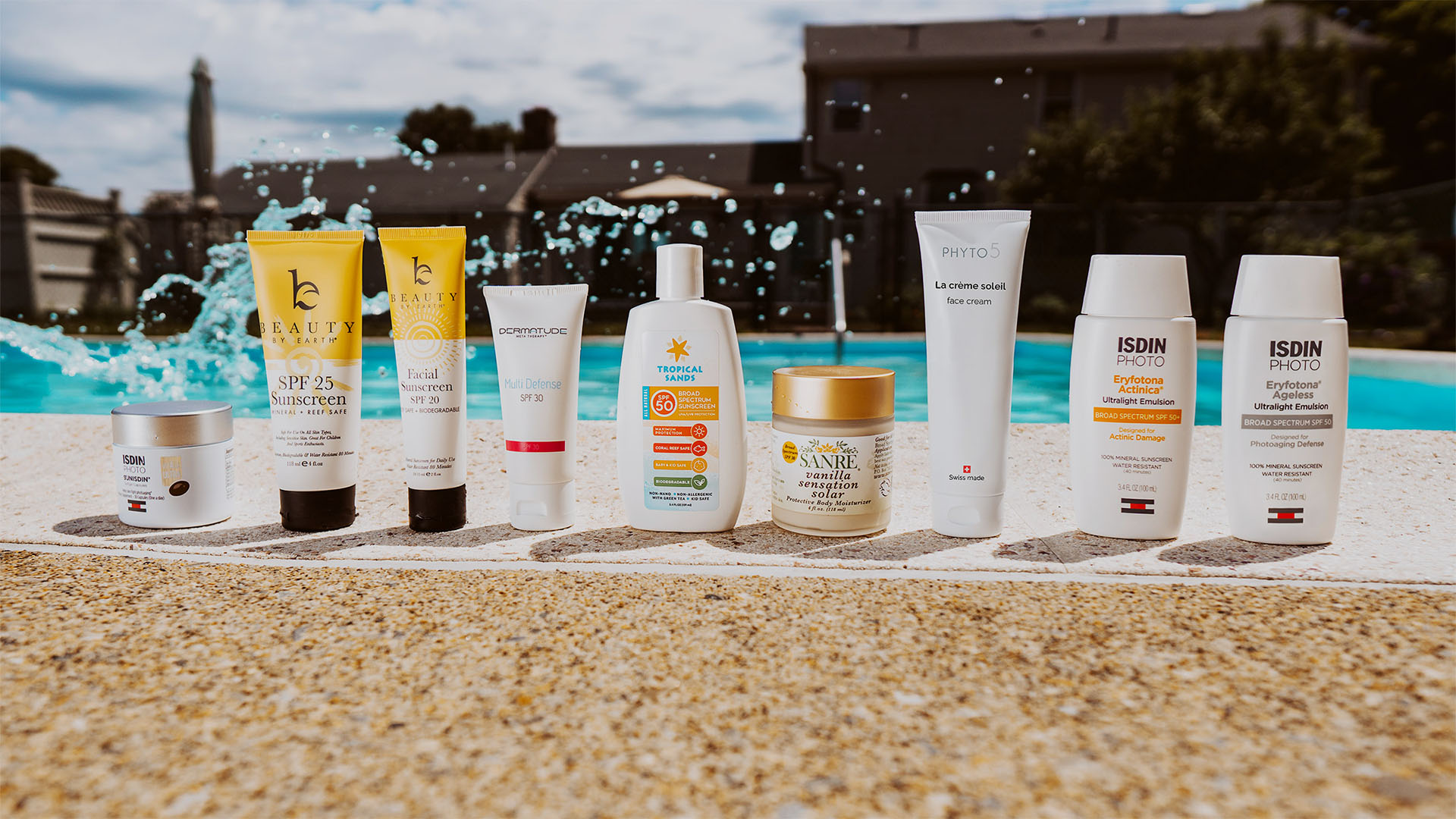You know the saying you are what you eat? Well, what about what you put on your skin? Did you know that your body has an average of five million pores and can absorb chemical ingredients, such as the ones found in most sunscreens, into your bloodstream?
In fact, that’s how non-mineral sunscreen works—UV-absorbing chemicals penetrate the pores and protect the skin from harmful sun rays by turning the absorbed UV rays into heat and then releasing them from the body. Pretty cool, right? Well, it’s a bit of a double-edged sword, as you’re about to find out. Fortunately, there are safe sunscreen ingredients, but—spoiler alert—most are not.
Is Sunscreen Safe?
According to the Environmental Working Group (EWG), “When the FDA began to consider sunscreen safety, it grandfathered in active ingredients from the 1970s without reviewing the evidence of their potential hazards.” In a report released in February 2019 by the agency, it was concluded that there is insufficient health and safety data on 12 of the 16 sunscreen ingredients that have, for the past 50 years, been “generally recognized as safe and effective.”
Yes, you read that correctly! For the past 50 years, we’ve been slathering on sunscreen that is chock-full of potentially toxic chemical ingredients. To be fair, 50 years ago, most sunscreen users only applied it during the summertime and only when partaking in outdoor activities where a bathing suit was the predominant attire.
Today, sunscreen has been promoted as an essential part of any daily skincare regimen. Between the rise in skin cancer and the continuous quest for the “Fountain of Youth,” active sunscreen ingredients are now found in lipsticks, body lotions, foundations, and even hair care products.
So, while exposure to small amounts of UV-absorbing chemicals sporadically throughout the year may not pose a major threat to your health, who’s to say, as those studies haven’t been adequately conducted. Now that we are using sunscreen far more regularly, and sometimes every day and multiple times a day, the “safeness” of the stuff is far more questionable.
Instead of dwelling on what we don’t know, let’s look at what we do know, and how you can stay safe in the sun externally and internally.
The Sunscreen Ingredients That Might Not Be Safe
In 2019 and 2020, the FDA published two different studies that highlighted oxybenzone, octinoxate, octisalate, octocrylene, homosalate, and avobenzone as being highly absorbable and capable of remaining in the bloodstream weeks after their application. If you read the labels of some of the most popular sunscreens, you will find all or most of these ingredients present. PABA (aminobenzoic acid) and trolamine salicylate, two other common ingredients, have recently been deemed downright unsafe.
The one ingredient that has gotten the most attention, though, is oxybenzone. The Center for Disease Control and Prevention reported that more than 96.8% of Americans have detectable traces of oxybenzone in their body.
This particular chemical ingredient has been detected in breast milk, urine, and blood plasm. It is under review for potentially disrupting hormone production in both children and adults. In fact, many pediatricians recommend avoiding sunscreens with oxybenzone on children altogether.
Oxybenzone and octinoxate have also been linked to killing coral reefs and upsetting endocrine activity in marine life. Some places, like Palau, Hawaii, Bonaire, and the U.S. Virgin Islands, have banned sunscreens containing these two ingredients.
The Bright Side of Sun Exposure
It’s understandably unnerving to think that a product you’ve trusted your whole life to ward off sunburns and skin cancer has a sneaky, sinister side, but it’s important to note that avoiding sun exposure or sunscreen altogether are not viable options. Already, the average American spends 90% of their life indoors, and this poses another slew of risks on our health and wellness.
Like plants, humans need sunshine to thrive. Without sufficient sun exposure, we run the risk of a vitamin D deficiency, compromised immune function, increased susceptibility to osteoporosis, sleep cycle inconsistency, a slow metabolism, and mild to severe mental health consequences. Now, more than ever, we need our immune system and mental health to be strong!
This is not a call to go bake in the sun, however, as prolonged, unprotected sun exposure can have the reverse effect, but to aim for at least 10 to 15 minutes of sunshine on your skin every day. Don’t worry if it’s cloudy; the benefits of sunlight are still available even on an overcast day. Not only does your body depend on sunlight to produce sufficient vitamin D, but also the mood-boosting hormone serotonin. Happiness and health come from sunbeams—at least to some extent.
Our Top 7 Safe Sunscreens
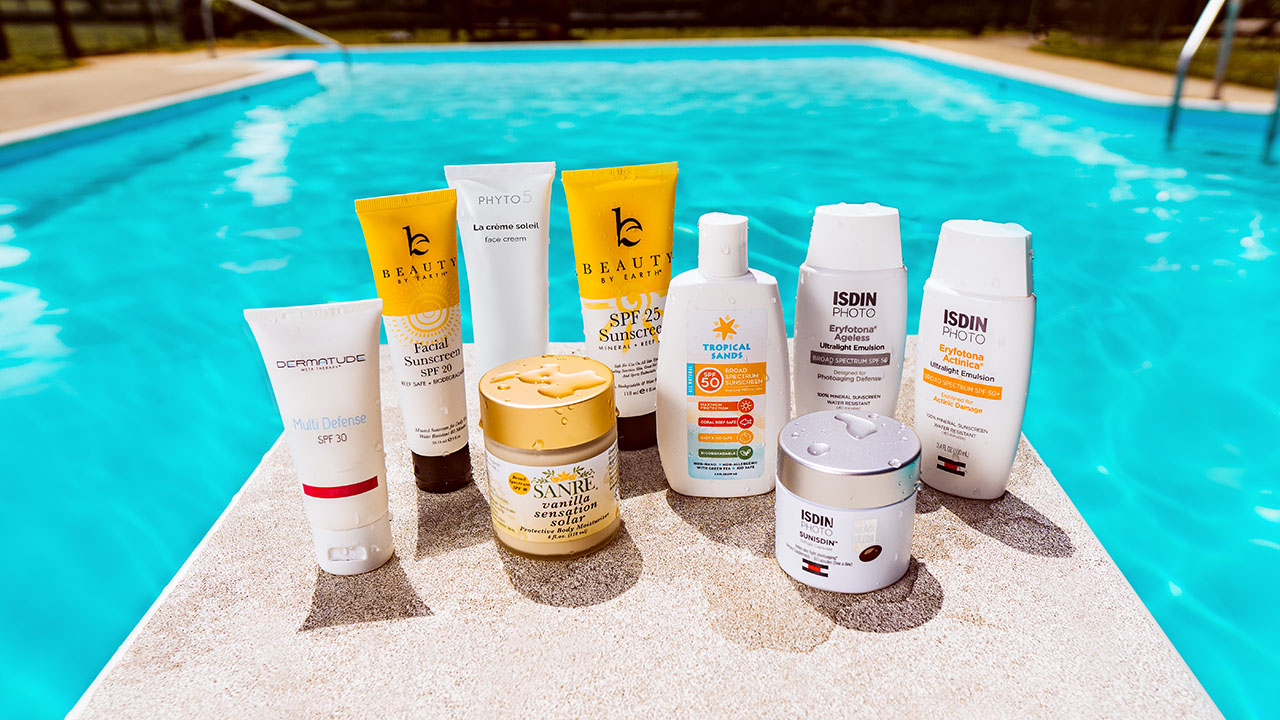
If most sunscreen ingredients, as far as we know, aren’t actually non-toxic, what are your options then?
Stop using sunscreen?
No! Hello, skin cancer and premature signs of aging.
Stop going out in the sun altogether, and become a creature of the night?
No way! You just learned why that is a bad idea!
What it really comes down to is using a sunscreen with safe ingredients. Fortunately, we live in an age of options! We’ve gone ahead and done the legwork for you by reviewing seven sunscreens that contain only safe sunscreen ingredients. What are the only two ingredients currently regarded as safe and effective for humans and the environment? Titanium dioxide and non-nano zinc oxide.
1. Tropical Sands

Tropical Sands is a broad-spectrum, SPF 50, all-natural, completely biodegradable, water-resident sunscreen that was EWG’s top pick for 2019. This is the epitome of what you should be looking for in a safe sunscreen! An anti-aging bonus of this sun protection option is that it is infused with green tea, a powerful antioxidant. The only small downside is that because this sunscreen isn’t absorbed into the skin, a faint white layer may be visible once you rub it in.
2. SANRE Organic Skinfood
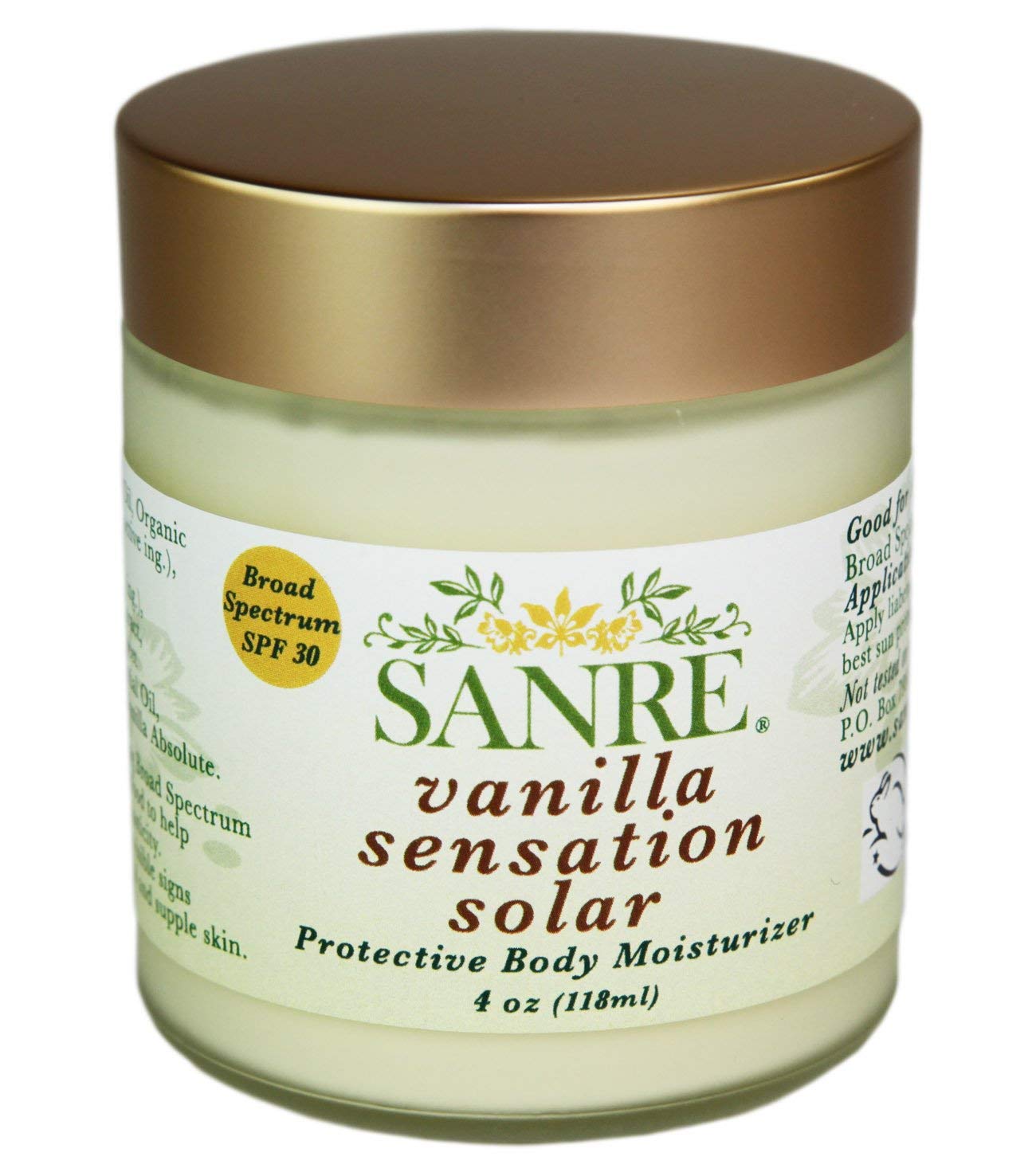
With ingredients like organic macadamia nut and coconut oil, organic sweet orange, lemon, lavender, and geranium essential oil, vanilla and citrus extract, and aloe vera, it’s easy to see why this sun protection product is called skinfood. I bet you can imagine how delicious this SPF 30 daily moisturizer smells. The active and safe sunscreen ingredients in this yummy lotion are zinc oxide and titanium dioxide.
Not only does this daily moisturizer provide sun protection, but it also provides essential nutrients and vitamins to help improve elasticity, reduce visible signs of aging, and promote radiant, supple skin.
3. Beauty by Earth

Here’s a sunscreen that the entire family will love, as well as the planet. This organic, all-nature, biodegradable, reef-friendly sunscreen comes in an SPF 20 facial sunscreen and an SFF 25 full-body sunscreen. What’s great about both of these products is that they won’t leave a chalky white residue behind like many other mineral sunscreens. The primary active ingredient is non-nano zinc oxide.
This water-resident sunscreen is also perfect for anyone with sensitive skin, including small children. Beauty by Earth adds in vitamin E, green tea extract, and aloe vera leaf extract for a little extra skin nourishment.
4. PHYTO5
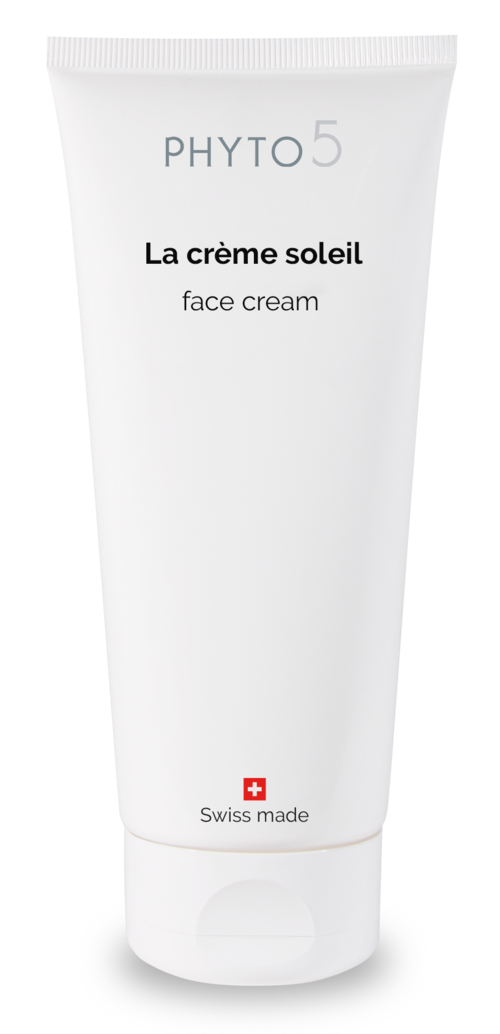
PHYTO5 is a Swiss Natural Energetic Skincare brand that is unlike any other on the market. They are recognized as a world leader in energetic, natural, and holistic skincare. Their entire skincare line embraces the Five Element Theory of Traditional Chinese Medicine and Ayurvedic principles. One of their most popular products is their La Crème Soleil face cream. This dreamy blend of aloe vera, shea butter, jojoba oil, and vitamin E provides luxurious hydration and sun protection with an SPF 30.
PHYTO5 is a mind, body, soul, and earth-friendly company that goes above and beyond in the realm of skincare. Depending on your specific skin type and the season, they have an inspiring array of products to compliment the La Crème Soleil to help you feel and look your best.
5. ISDIN PHOTO Eryfotona Actinica
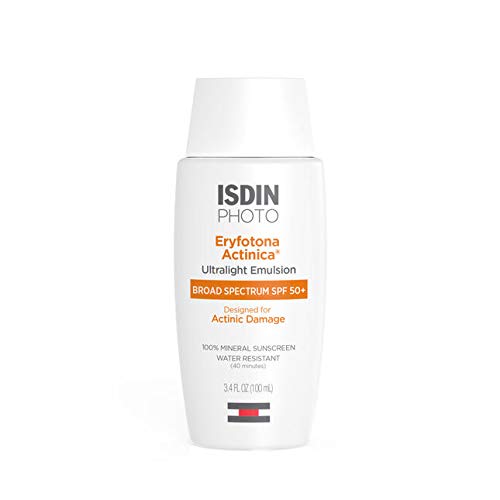
This broad-spectrum SPF 50 mineral sunscreen is designed explicitly for actinica damaged skin (i.e., sun-damaged skin). The sole active ingredient is zinc oxide, but what makes this sunscreen especially unique is its ability to repair damaged skin. Laced with photolyase enzymes derived from plankton and vitamin E, this lightweight daily sun lotion protects your skin from future damage and improves its current condition. All of ISDIN PHOTO sunscreens are also suitable for sensitive skin.
6. ISDIN PHOTO Eryfotona Ageless
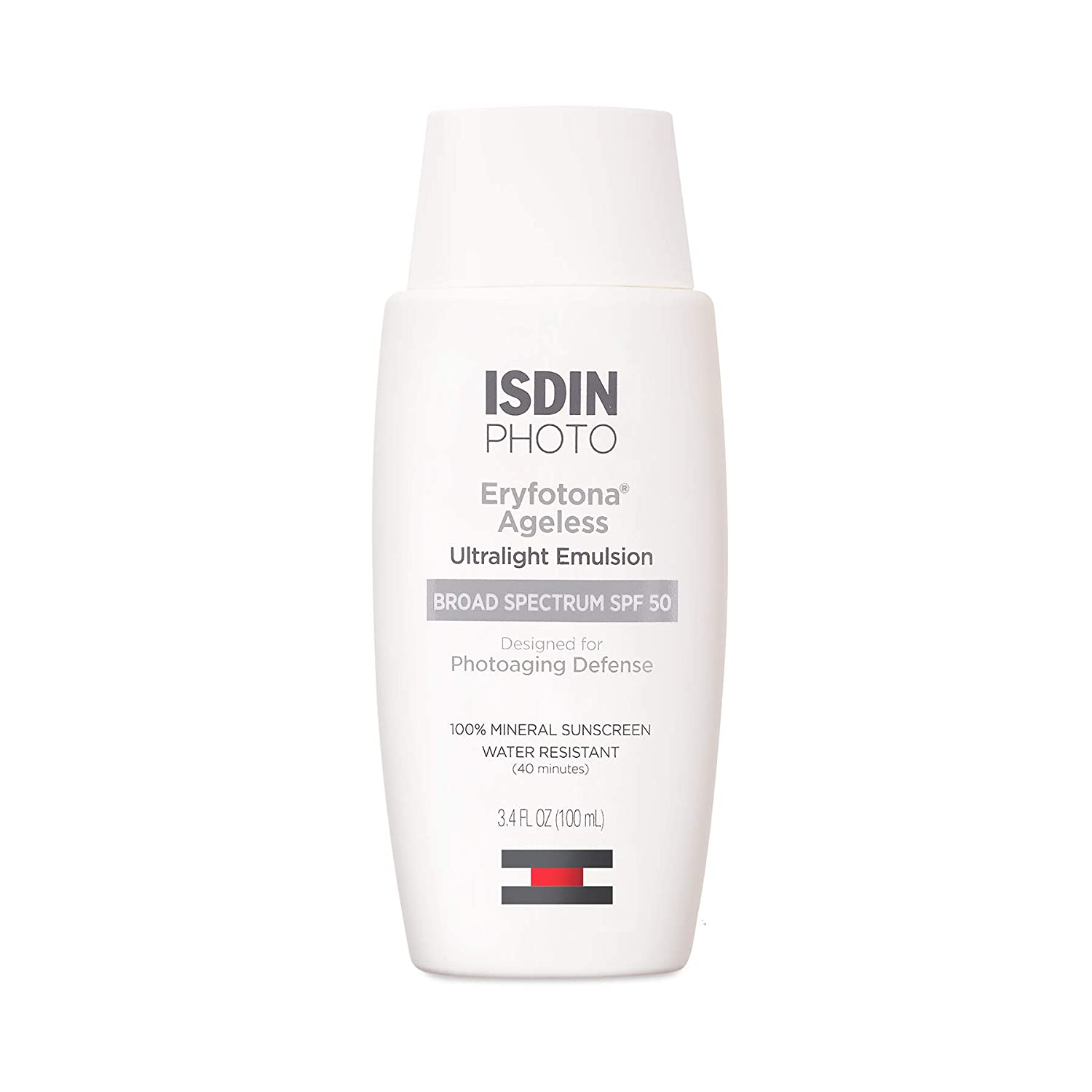
ISDIN PHOTO Eryfotona Ageless is designed with photoaging defense in mind. This lightly tinted SPF 50 daily emulsion targets early signs on aging while protecting your skin from further sun damage. This blend also includes vitamin E for antioxidant support, a peptide complex to support collagen and improve elasticity, PepQ10 to fight signs of photoaging and improve radiancy, and photolyase enzymes to repair damage caused by the sun.
A major perk of ISDIN PHOTO Eryfotona Ageless is its silky smooth application that actually improves the appearance of your skin immediately. If you’re not big into make-up, this might be the only product you need to put on your face in the morning.
7. ISDIN PHOTO Sunisdin
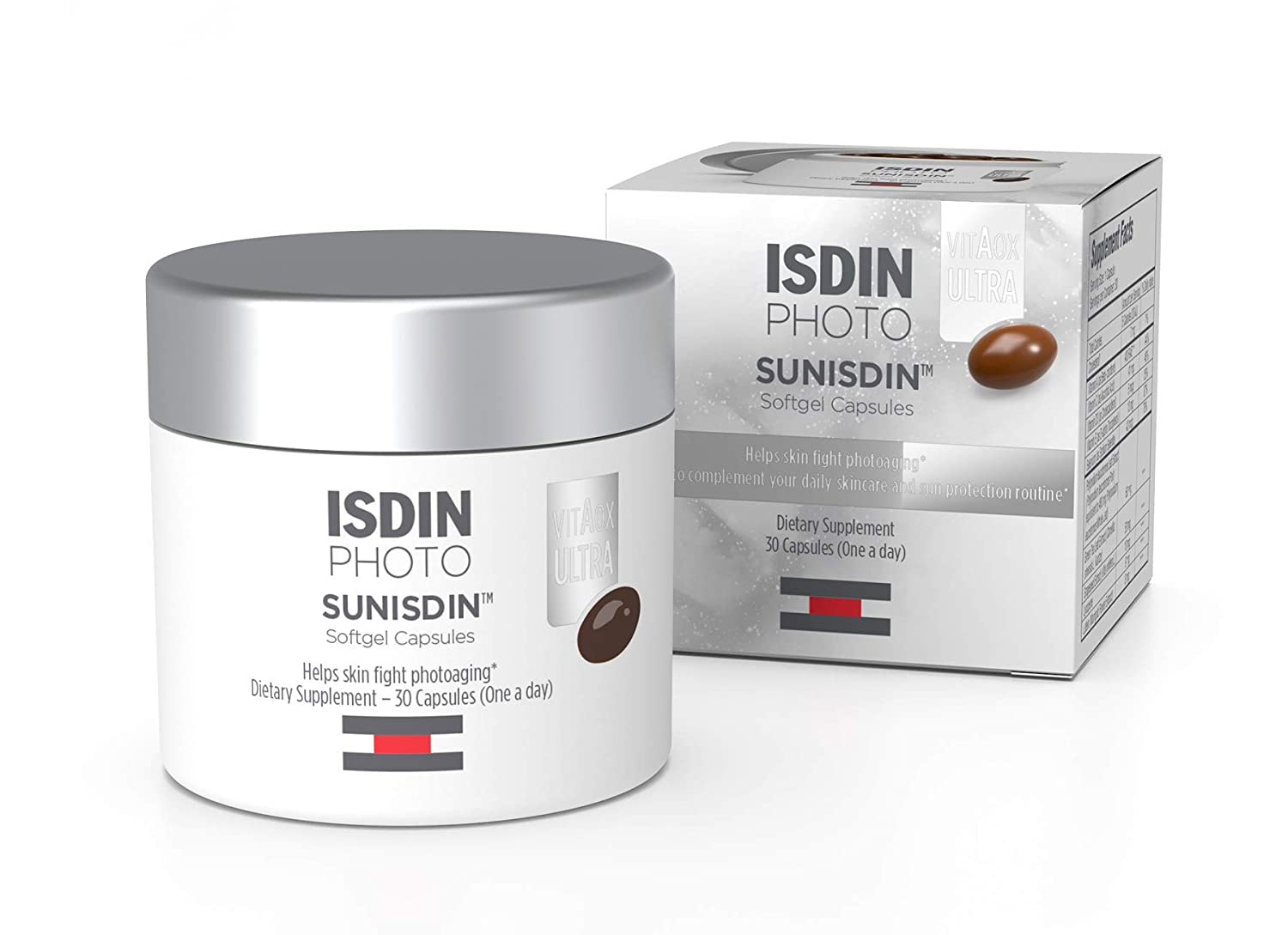
Whether you live in the tropics or the tundra, you can’t escape the sun, nor should you want to. To give your skin a little support from the inside, ISDIN makes a daily antioxidant-rich supplement specially formulated to defend against photoaging.
Packed with vitamin D, beta carotene, lycopene, lutein, selenium, vitamin E, vitamin C, grape seed extract, green tea leaf extract, and polypodium leucotomos, this soft-gel capsule has been proven to improve skin luminosity, elasticity, texture, and overall skin wellness.
Knowledge Leads to Safer Choices
In a perfect world, products that are promoted to protect you, like sunscreen, would protect you without potentially harmful side effects. A key piece of advice that can and should be applied to anything you plan on putting on or in your body is to start reading and understanding labels.
There is certainly a learning curve—thank goodness you can look up absolutely anything on the Internet on the spot. But getting into the habit of reading labels and understanding what exactly you are exposing yourself to is vital if you are going to make truly safe and healthy choices.
Fortunately, there are safe sunscreen ingredients and any brands that contain active ingredients other than zinc oxide and or titanium dioxide should be avoided.
* Disclaimer: The statements made in this article have not been evaluated by the Food and Drug Administration. Any products or treatments mentioned are not intended to diagnose, treat, cure, or prevent any disease. Please consult a licensed medical practitioner for medical advice. At Innovative Medicine, we believe in transparency. We want you to know that we may participate in affiliate advertising programs pertaining to products mentioned herein.
